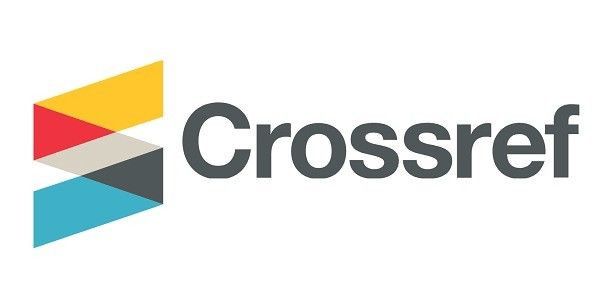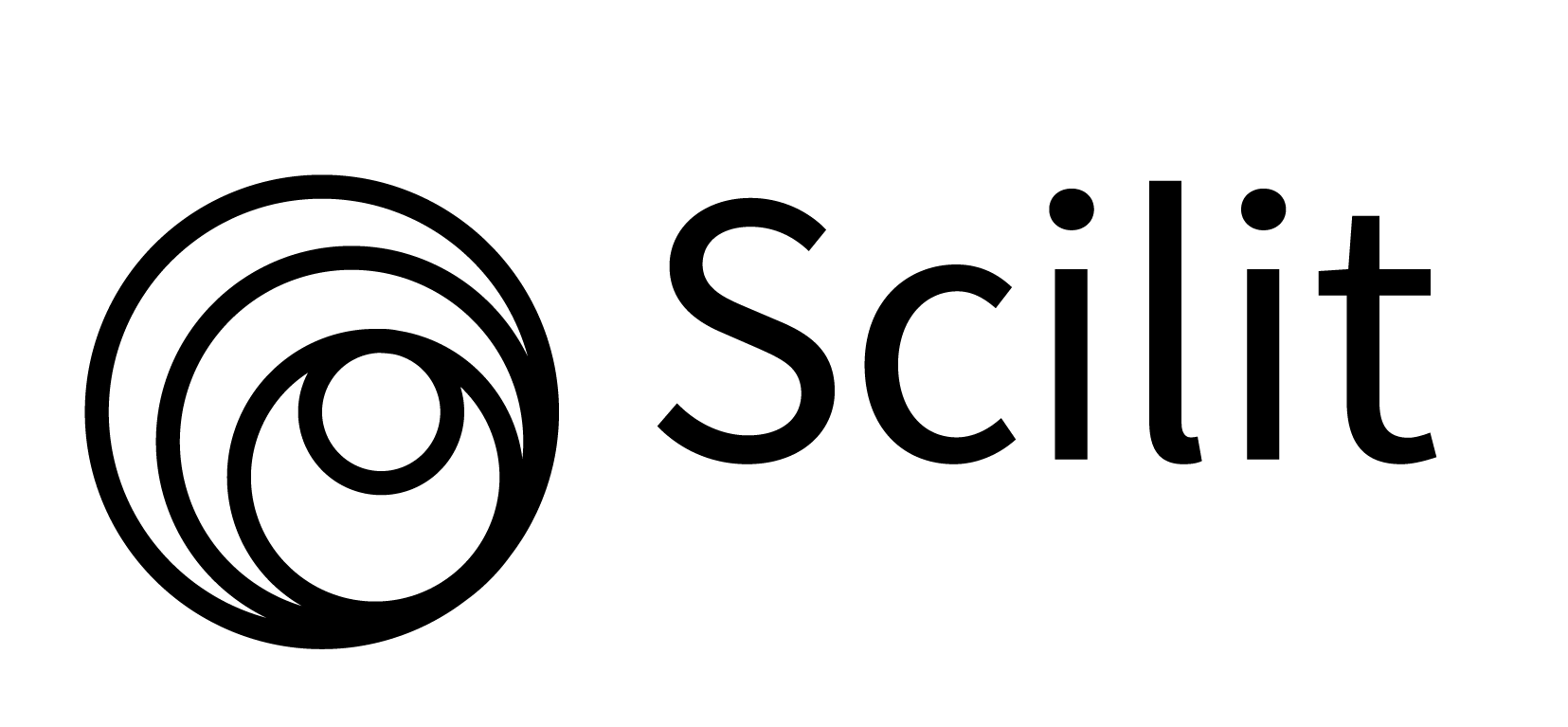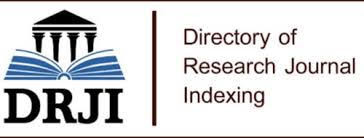Case Report
Siddha Approach in Rehabilitation of a Patient with Foot Drop by Use of CSET (Chakrasiddh Spine Expert Therapy) - A Case Report
- Dr. Shweta Tiwari
Corresponding author: Shweta Tiwari, Consultant Dr, Dept of Siddha Medicine, Chakrasiddh Health Centre, Hyderabad, India.
Volume: 1
Issue: 1
Article Information
Article Type : Case Report
Citation : Bhuvanagiri Sathya Sindhuja, Injarapu Sankar, Shweta Tiwari. Siddha Approach in Rehabilitation of a Patient with Foot Drop by Use of CSET (Chakrasiddh Spine Expert Therapy) - A Case Report. Journal of Neurology and Neurosurgery 1(1). https://doi.org/10.61615/JNN/2025/APRIL027140429
Copyright: © 2025 Shweta Tiwari. This is an open-access article distributed under the terms of the Creative Commons Attribution License, which permits unrestricted use, distribution, and reproduction in any medium, provided the original author and source are credited.
DOI: https://doi.org/10.61615/JNN/2025/APRIL027140429
Publication History
Received Date
08 Apr ,2025
Accepted Date
22 Apr ,2025
Published Date
29 Apr ,2025
Abstract
Paakavayu or Panguvata in the Siddha system of medicine is used to describe weakness or paralysis of the limbs, including foot drop, a condition which is clinically characterized as severe weakening of ankles and toe dorsiflexion. This condition can lead to dragging of the toes while walking and difficulty in raising the front part of the foot towards the shin, causing a shuffling gait, and may often result in tripping. It is a debilitating disease as it has a great impact on the daily life activities of an individual, lowering their quality of life.
We present the case of a 36-year-old male with foot drop in the left leg of indeterminate origin, necessitating extensive medical evaluation. The patient had a history of a significant fall during his teens, resulting in severe lumbar pain and a foot fracture, initially managed well with conventional pharmacological treatment, but later in his 30s started feeling weakness in both legs, gradually resulting in left leg foot drop. The patient exhibited persistent functional impairment despite conventional medical interventions, rehabilitation programs, and alternative therapies. Notably, after one-month of application of Chakrasiddh Spine Expert therapy (CSET), the patient experienced a substantial improvement in foot mobility, strength, balance, gait, and pelvic floor function monitored as enhanced scores in Manual muscle Testing, FADI (Foot and Ankle Disability Index), Berg Balance scale and Dynamic Gate index.
The observed clinical response of the patient of Siddha therapeutic approach, which integrates biomechanical alignment with neuro-muscular energizing techniques, suggests a potential link between neuro-musculoskeletal dysfunction and foot drop. This case underscores the need for further studies on Siddha therapy, particularly CSET, as a possible adjunctive or primary intervention for foot drop cases.
Keywords: Foot drop, nerve compression, foot dorsiflexion, Panguvata, Siddha, Chakrasiddh spine and energy therapy, Varmam therapy, Thokannam
►Siddha Approach in Rehabilitation of a Patient with Foot Drop by Use of CSET (Chakrasiddh Spine Expert Therapy) - A Case Report
Dr Bhuvanagiri Sathya Sindhuja1, Injarapu Sankar2, Dr Shweta Tiwari3*
1 Patron, Chakrasiddh, Dept of Siddha Medicine, Chakrasiddh Health Centre, Hyderabad, India.
2 Chief Healer, Dept of Siddha Medicine, Chakrasiddh Health Centre, Hyderabad, India.
3 Consultant Dr, Dept of Siddha Medicine, Chakrasiddh Health Centre, Hyderabad, India.
Introduction
Foot drop is a neurological condition in which the foot can’t be raised due to weakness of the muscles in the leg. It is a debilitating clinical condition characterized by the impairment of dorsiflexion of the foot or paralysis of the Anterior tibia, Extensor Hallucis Longus, and Extensor Digitorum Longus muscles [1,3]. Ankle dorsiflexion weakness causes symptoms like difficulty in lifting the foot towards the shin; this leads to a high-stepping gait and results in multiple falls and tripping. Individuals with foot drop walk with an odd step; they cautiously try to lift their feet as they walk, and in a few, there is clearly toe dragging or limping [2]. Foot drop is often a symptom of an underlying neurological, muscular, or skeletal dysfunction rather than a disease itself. It is a complex, multifaceted ailment, with almost 21% of cases presenting numerous medical disorders as its potential contributing factor [3]. These reasons may include muscular impairment, nerve injury, diabetes, stroke, multiple sclerosis (MS), Polio, and other neuromuscular disorders as spinal cord injury. It is linked to both disc herniation and spinal canal stenosis, two prevalent degenerative lumbar diseases. 62% of cases of Foot drop are due to compression or damage to the common peroneal nerve at the fibular head [4]. Commonly, with damage to the common peroneal nerve, there will be weakness of the tibialis anterior and other key dorsiflexors of the foot. These compressions can be caused by any trauma or injury to the lumbar spinal nerve root, fractures, or space-occupying lesions, leading to foot drop [5].
Foot drop diagnosis includes clinical examination, electromyography (EMG) [4], nerve conduction studies (NCS), and MRI to identify the underlying pathology. At present, treatment choices include surgical interventions in severe cases and functional electrical stimulation (FES) devices to manage the condition. Some alternative therapies have also given good results, including fixed ankle-foot orthoses (AFO) [3] if the weakness is more severe. Generally, 90% of patients undergo physical therapy, which reduces pain and is effective in restoring muscle strength, managing a good range of motion, and speeding up patients' clinical recovery [6,7]. Paakavayu or Panguvata in the Siddha system of medicine is used to describe weakness or paralysis of the limbs, including foot drop, a condition which is clinically characterized as severe weakening of ankles and toe dorsiflexion [8]. Traditional Siddha therapy offers symptomatic relief in foot drop by improving circulation, reducing muscle stiffness, increasing muscular strength, and supporting nerve function. Also, therapy works by aligning the spine, reducing pressure on the nerves, and restoring normal nerve signals to the affected foot [9]. While it does not directly treat the underlying neurological cause, it can help alleviate symptoms and improve mobility when used alongside rehabilitative supports.
Chkarasiddh spine expert therapy (CSET), incorporating Siddha techniques like deep-tissue pressures, varmam (energy) therapy [10], trigger point, and Thokkanam [11] (manipulation) therapy, has aided in the management of several musculoskeletal diseases with a good success rate [12]. Multiple database searches showed that several neurological disorders have been successfully treated with Siddha therapy, but very few case studies describe the management of foot drop secondary to common peroneal nerve injury. This intriguing fact adds to the interest and potential of this treatment. Though past successes where siddha has been used to correct physical dysfunctions in various disorders, the present case required implementation of a comprehensive and personalized treatment regimen rather than being used as a standalone treatment.
This case report aimed to assess the efficacy of a customized Siddha program, CSET, in a 36-year-old male with paraparesis along with left foot drop. Despite utilizing various treatment modalities as physiotherapy, kerala-massages and braces, the patient was unable to get a complete resolution of his condition. As a result, a customized CSET program was designed at Chakrasiddh with the goals of reducing tendonitis tightness, strengthening both extremities, preventing further muscle atrophy due to denervation, improving balance and gait, and improving daily living activities (ADL). Notably, after one month of application of CSET, the patient experienced a substantial improvement in foot mobility, strength, balance, gait, and pelvic floor function. The observed clinical response of this therapeutic approach underscores the need for further investigation into CSET as a possible adjunctive or primary intervention for foot drop cases with unclear etiology.
Case Presentation
A 36-year-old NRI male patient presented in our center, Chakrasiddh, with treatment-resistant foot drop, which was managed well in our clinic with the customized Siddha program “CSET”. His past medical history included a significant fall in his teens, resulting in severe lumbar pain and a foot fracture, initially managed well with conventional pharmacological treatment.
Initial Medical Consultations and Treatment
The patient was apparently right five years back until he contracted COVID-19 in 2020. Post his recovery, he started having lower back pain that was intermittent in nature. Sometimes, the pain was sharp and shooting type, which aggravated on movement and relieved on rest; since he was in Canada, he had to take over-the-counter pain killers to subdue discomfort and pain. Post covid, in India, he went to an orthopedic who suggested complete rest and NSAID’S for pain relief. To avoid taking medicines, he went for Kerala-massage therapy, which aggravated his agony, and he had to switch back to drug therapy. In April 2022, back in Canada, the patient did some intense labor work, after which he felt continuous lower back pain with no relief, even on rest and medications. He somehow managed pain for two years with medications, but there was a complaint of progressive weakness in both lower limbs. Aggravated symptoms made him unable to continue work in Canada, he came to India and visited his neurosurgeon, who went for an MRI (Magnetic Resonance Imaging) for a conclusive diagnosis. MRI was suggestive of spinal canal narrowing with thecal sac compression. On recommendation, he started wearing braces and opted for homeopathic drugs with physiotherapy sessions to strengthen his legs. In due course of time, the onset of foot drop progressed and was insidious in nature. Despite the pain and discomfort, he continued working on the floor in Canada until he noticed severe limping and an inability to bear weight on his left leg; his right leg also felt very weak. Over the next few months in India, he consulted multiple orthopedic, neurologists and underwent various MRIs and EMG studies, all yielding inconclusive results. Despite comprehensive neurological assessments and advanced imaging, no definitive underlying pathology could be established. The patient exhibited persistent functional impairment despite conventional medical interventions, rehabilitation programs, and alternative therapies. After six months of unsuccessful treatments, including traditional and alternative therapies, the patient was referred to our holistic centre “Chakrasiddh”, to seek some positive results.
Clinical Findings
On neurological examination, the range of motion (ROM) [15] of the affected extremity was measured before and after the CSET program (Table 1). For strength, the Manual Muscle Testing (MMT) [13] assessment was done before starting the therapy. According to the tone grading scale, the tone in the right lower limb was found to be +2 (Initiates some motion on gravity), but in the left lower extremity was found to be 1 (Evidence of slight contractibility but no joint motion). According to the American Spinal Injury Association (ASIA) [14] impairment scale, the grade was assessed as B (Incomplete functional impairment).
Table 1: ROM examination pre-therapy of both lower limbs (ROM-Range of motion; AROM-Active range of motion; PROM-Passive range of motion; N/A-Not assessable)
|
|
Pre-therapy Left leg movements |
Pre-therapy Right leg movements |
||
|
Joints |
AROM |
PROM |
AROM |
PROM |
|
Hip flexion |
0-30˚ |
0-40˚ |
0-45˚ |
0-50˚ |
|
Hip extension |
0-5˚ |
0-10˚ |
0-5˚ |
0-10˚ |
|
Hip abduction |
0-10˚ |
0-30˚ |
0-10˚ |
0-30˚ |
|
Hip adduction |
0-10˚ |
0-10˚ |
0-12˚ |
0-12˚ |
|
Internal rotation |
0-18˚ |
0-15˚ |
0-18˚ |
0-15˚ |
|
External rotation |
0-20˚ |
0-25˚ |
0-20˚ |
0-20˚ |
|
Knee flexion |
0-30˚ |
0-110˚ |
0-35˚ |
0-120˚ |
|
Ankle dorsiflexion |
Not able to do |
0-10˚ |
0-5˚ |
0-8˚ |
|
Ankle plantar-flexion |
N/A |
0-30˚ |
0-20˚ |
0-30˚ |
Diagnostic Investigations [2]
Blood counts, general biochemistry, protein, tumor markers, and levels of vitamin B12 and folic acid measured a month ago were either normal or negative; only the Vit D value was low (10 ng/mL). Thoracic spine x-ray depicted mild scoliosis; Lumbar spine X-ray showed degenerative disc at L4-L5, L5-S1, compressing the L4-L5 nerve roots; MRI Report mentioned disc dessication changes with diffuse disc buldge with moderate degree, focal type II posterior annular tear at L4-L5 and L5-S1; causing anterior thecal sac compression, abutting bilateral traversing nerve roots with bilateral inferior neural foramina and relative spinal canal narrowing. Impingement of the traversing right S1 nerve root by a central disc protrusion.
Therapeutic Interventions [16,17]
The patient was treated with CSET, which incorporates Siddha marma (energy) therapy along with Thokkanam therapy for thirty days, with a follow-up after 3 months.
Thokkanam (massages) Therapy: This therapy employs a natural, manual approach to pain management by utilizing targeted pressure techniques such as rhythmic tapping/punching, compressing/gripping, grasping/holding, and precise twisting at points for two minutes for good results. These bio-mechanical manipulations aid in spinal realignment, optimizing musculoskeletal balance, and overall strengthening of the spine and associated muscles.
Marma/Varmam (Energy) Therapy: Siddha varmam or Marma points related to foot movement are stimulated to enhance nerve regeneration. Gentle stretching and vibration-based muscle stimulation can help strengthen weakened foot muscles and activate endogenous healing mechanisms. Over time, this therapy improves the ability to lift the foot, reducing reliance on braces. In this patient, these points were intervened for twenty minutes with each marma point stimulated for only three minutes in each session, and two energy sessions were done by the chief healer. Key varmam points [10,18] for Foot drop, which were therapeutically stimulated, are mentioned in Table 2.
Table 2: Different Varmam Points for Manipulation and Their Location
|
Name of Point |
Location |
Duration of manipulation |
Function |
|
Ayul kaalapinnal |
posterior to the ear, near the base of the skull (occipital region) |
2-3 mins/ every alternate day |
Nerve conduction |
|
Saramudichi |
junction of the spinal cord and skull base, near the cervicomedullary junction |
2-3 mins/ every alternate day |
Nervous system functioning and cerebrospinal fluid regulation |
|
Utchipathappa kaalam |
near the anterior fontanelle (Bregma point) |
3 mins |
corresponds to the Sahasrara chakra in yogic sciences, plays a vital role in energy flow and higher cognitive functions |
|
Nanganapootu |
lower limb region, near the knee joint or shin area |
5 mins |
Supports lower limb mobility, sciatic nerve conduction |
|
Ullangalvellai varmam |
Meeting Point of Two Balls of Sole |
3-4 mins |
Enhance blood circulation & muscular coordination in lower limbs |
|
Thavalai kaalam |
near the knee joint, around the patellar region |
4 mins |
Improves neuromuscular coordination, aiding in walking difficulties and postural stability |
|
Kakkattai kaalam |
back of the knee joint (popliteal region) |
5 mins |
Stimulates nerve function, helpful for peroneal nerve disorders |
Dietary Formulations [19]
While there is no specific diet to cure foot drop directly, maintaining a balanced, nutrient-rich diet can help in managing the condition by supporting nerve health, reducing inflammation, and aiding recovery. The patient was advised to incorporate anti-inflammatory food items like chia seeds, flax seeds, walnuts, curcumin, ginger, and berries. Vitamin B12 and B6 play a crucial role in nerve health, so foods like dairy products, bananas, potatoes, and chickpeas were added to the diet. To strengthen muscle function, magnesium-rich foods as spinach, kale, almonds, sunflower seeds, and pumpkin seeds are integrated into a daily diet. An antioxidant-rich diet including whole Grains, brown rice, quinoa, and oats also supports recovery of nerve damage.
Physiotherapy Intervention [20]
A customized physical therapy plan was made for the patient. The patient was given physiotherapy sessions for 4 weeks, along with therapy for nearly 20 minutes every day. The physical therapy regimen included Kegel's exercise, pelvic bridging, static back exercises, core strengthening, and breathing exercises, one set of 10 repetitions. For the first set of 10 repetitions of intrinsic exercise and Active Assisted Range of motion exercise was done. For gait, it was encouraged to walk in tandem, ascend stairs, move ahead and backward, step climb, and navigate obstacles.
Follow-up and Outcome
After implementing CSET therapy for 30 days, the patient reported substantive improvement in gait and muscle strength. Pre- and post-therapy scores of the Berg Balance Test [21], Dynamic Gait Index [22], Barthel Index [23], and Manual Muscle Testing [13] were recorded in Table 3. On evaluating the strength of pelvic floor muscles pre- and post-therapy, it was graded as 2 and 4 simultaneously, which showed a good transformation. Table 4 interprets ROM examination post-CSET.
Table-3: Evaluation of outcome Measures pre- and post-therapy
|
Outcome Measures |
Pre-Therapy |
Post-Therapy |
|
Berg Balance Scale |
21/56 |
34/56 |
|
Dynamic Gait Index |
8/24 |
13/24 |
|
Barthel Index |
54/100 |
67/100 |
Table 4: ROM examination post-therapy of both lower limbs
|
|
Post-therapy Left leg movements |
Post-therapy Right leg movements |
||
|
Joints |
AROM |
PROM |
AROM |
PROM |
|
Hip flexion |
0-50˚ |
0-70˚ |
0-45˚ |
0-50˚ |
|
Hip extension |
0-15˚ |
0-20˚ |
0-15˚ |
0-20˚ |
|
Hip abduction |
0-25˚ |
0-35˚ |
0-30˚ |
0-35˚ |
|
Hip adduction |
0-20˚ |
0-25˚ |
0-32˚ |
0-26˚ |
|
Internal rotation |
0-22˚ |
0-25˚ |
0-20˚ |
0-35˚ |
|
External rotation |
0-25˚ |
0-35˚ |
0-28˚ |
0-30˚ |
|
Knee flexion |
0-60˚ |
0-120˚ |
0-95˚ |
0-125˚ |
|
Ankle dorsiflexion |
0-5˚ |
0-12˚ |
0-15˚ |
0-18˚ |
|
Ankle plantar-flexion |
0-5˚ |
0-35˚ |
0-30˚ |
0-35˚ |
According to tone grading scale, the tone in the right lower limb was found +2 and in left lower extremity was found to be 1 at the time of inception of therapy but post-treatment it was evaluated as 3- (some but not complete ROM against gravity) and 2- (initiates motion if gravity is eliminated) respectively. Table 5 explains Manual Muscle Testing (strength) assessment according to Oxford grading.
Table 5: Manual Muscle Testing Assessment
|
|
Pre-Therapy ROM |
Post-Therapy ROM |
||
|
Different Muscles |
Left |
Right |
Left |
Right |
|
Hip flexors |
2+ |
2+ |
3- |
3- |
|
Hip extensors |
2- |
2- |
3- |
3- |
|
Knee flexors |
2+ |
2+ |
3 |
3 |
|
Knee extensors |
2+ |
2+ |
3- |
3- |
|
Ankle dorsiflexors |
1 |
3- |
2- |
3 |
|
Ankle plantar flexors |
N/A |
2- |
2+ |
3- |
(3+: complete ROM against gravity with minimal resistance, 3: complete ROM against gravity, 3-: some but not complete ROM against gravity, 2+: Initiates motion against gravity, 2: complete ROM with gravity eliminated, 2-: Initiates motion if gravity is eliminated, 1: Evidence of slight contractility but no joint motion, 0: No contraction palpated)
The X-ray revealed the presence of lumbar compression at level L4-S1 (Figure 1 shows the pre- and post-X-rays furnished to see the status changes in the lumbar compression).
Fig 1: Pre and post-therapy x-rays (depicting compression at L3-S1)

Figure 2 Shows the patient’s movements at different weeks during therapy.

Discussion
Foot drop, a neuromuscular condition characterized by the inability to lift the front part of the foot, often results from nerve damage, muscular disorders, or neurological conditions such as lumbar disc herniation, stroke, multiple sclerosis, or peripheral neuropathy [2]. Conventional treatments include physical therapy, bracing, and surgical interventions, but Siddha medicine offers a holistic and integrative approach to enhance recovery, improve nerve function, and restore mobility [3]. Siddha is one of the important traditional medical systems of India, majorly practiced in Tamil Nadu and its fringes. Its techniques have demonstrated positive results in cases related to muscular dystrophy, neuropathy cases, and paralysis by strengthening muscle functions and recovery of nerve damage [24]. The case presented involves a 36-year-old male who was unable to raise the front part of the foot due to weakness in both legs and paraparesis with left foot drop, occurring due to peroneal nerve injury, which is one of the major causes of foot drop [4]. Diagnosis shows significant changes in the lumbar region following lumbar disk buldge at L4-S1, and neural foramina decompression at the L3-S1 level underscores the need for effective management strategies, as earlier mentioned by other researchers [2]. A structured CSET program for 30 days with follow-up after 3 months was designed, incorporating Siddha techniques as varmam and thokannam along with physiotherapy sessions to address his functional impairments and optimize neurological recovery [24,25]. To assess the patient's progress, validated outcome measures, including the Dynamic Gait Index and Berg Balance Scale, were employed both pre- and post-intervention of therapy. The tailored program incorporated neuromuscular orientation, balance training, gait training, pelvic floor rehabilitation, and strength conditioning to enhance motor control and functional mobility [22,26].
Recent studies have explored alternative treatments and non-surgical interventions to be beneficial in managing symptoms associated with neurogenic claudication or gait and foot-related conditions, particularly foot drop or other neurological conditions. The mentioned case was intervened with CSET, incorporating external pressure therapy like thokkanam therapy, which bears a resemblance to massages of other non-intervention systems. Several studies suggest that point pressures and massage therapies, foot massage, and Thai foot massage can improve symptoms such as pain, blood flow, and range of motion in conditions related to foot drop, peripheral neuropathy, and post-surgical pain [27]. A case report presented on Duchenne Muscular Dystrophy (DMD) significantly improved muscle strength, gait, body balance, joint ROM, and pelvic floor function when he was subjected to integrative Siddha Varmam & Thokkanam therapy, with dietary modifications and physiotherapy for 25 days, improving the quality of life of a pediatric patient [24]. Another case report demonstrates the traditional therapy of Siddha as a comprehensive and efficient treatment modality for sensory motor axonal neuropathy (SMAN) in a 4-year-old female displaying a noticeable alteration in her muscular strength, balance, and motor function in 2 months of therapy intervention [25]. Furthermore, a case report on a 45-year-old male with an ACL tear and associated gait demonstrated a marked improvement in joint flexibility and a significant enhancement in daily functional abilities following 15 days of Marma therapy [11]. In Siddha medicine, a combination of internal and external treatments, including D5 Chooranam, Maththan Thailam, and Palagaraiparpam, has demonstrated potential in healing foot ulcers while regulating blood sugar levels [28]. A systematic review and meta-analysis in R.A and osteoarthritis patients having gait and confirmed tremendous improvement in musculoskeletal pain in knees and ankles, reducing gait when they were subjected to Siddha Varmam for 2 weeks [29].
CSET incorporates external pressures and special energy sessions that work on varmam points corresponding to acupoints of traditional Chinese medicine. A systematic review of 31 randomized clinical trials has shown that foot baths combined with acupoint massage may be safer and more effective for treating symptoms related to peripheral neuropathy, like numbness, tightness, compared to control groups [30]. Ayurvedic approaches, including Vatavyadhi Chikitsa and Panchakarma treatments, have shown promise in managing bilateral foot drop [20,31]. Foot massages have been found effective in improving balance and reducing fall risk in elderly individuals, with 10-minute sessions per foot yielding significant results [26]. Additionally, a randomized controlled trial (RCT) conducted in Southern India reported that Siddha-based energy therapies serve as an effective alternative to anti-inflammatory drugs for pain reduction, joint flexibility, and overall quality of life improvement in patients with osteoarthritis [32]. An article in the Journal of Research in Ayurvedic Sciences explores the relationship between traditional Tamil probiotic foods and the Siddha philosophy. It highlights how these foods contribute to gut microbiota balance, which is crucial for digestion and immunity, aligning with Siddha principles that advocate for diet as a means to maintain bodily equilibrium [33]. Also, studies on mild exercises, energy-focused yoga postures, and meditation with siddha therapy demonstrated a quick recovery in 20 patients with frozen shoulder and numbness in hands, along with heel pain [34]. The regimen brought observable reductions in stress levels, enhanced core muscle strength, improved postural alignment, and an overall sense of well-being, highlighting the potential of integrative movement-based therapies in neuromuscular rehabilitation [35]. The above findings align with our observations, where our patient exhibited notable enhancements in muscular strength and neuroplasticity, restoring motor coordination, with the support of dietary modifications and physiotherapy exercises.
Conclusion
The study highlights the critical role of multimodal CSET strategies, which, post-intervention, demonstrated significant improvements in multiple domains, including gait mechanics, body balance, joint range of motion, and pelvic floor function. These outcomes suggest that traditional Siddha interventions, when appropriately tailored, can support individuals experiencing neurological deficits, such as foot drop, by enhancing muscle tone, nerve conduction, and overall functional capacity, reinforcing the therapeutic potential of Siddha interventions in the management of foot drop, lowering economic burdens associated with conventional treatments. The case underscores the need for further studies on Siddha therapy, particularly CSET, as a possible adjunctive or primary intervention for foot drop cases.
- Carolus A, Mesbah D, Brenke C. (2021). Focusing on foot drop: results from a patient survey and clinical examination. Foot (Edinb). 46: 101693.
- Wang Y, Nataraj A. (2014). Foot drop resulting from degenerative lumbar spinal diseases: clinical characteristics and prognosis. Clin Neurol Neurosurg. 117: 33–39.
- Carolus AE, Becker M, Cuny J, Smektala R, Schmieder K, Brenke C. (2019). The interdisciplinary management of foot drop. Dtsch Arztebl Int. 116(20): 347–354.
- Jaqueline da Cunha M, Rech KD, Salazar AP, Pagnussat AS. (2021). Functional electrical stimulation of the peroneal nerve improves post-stroke gait speed when combined with physiotherapy. A systematic review and meta-analysis. Ann Phys Rehabil Med. 64(1): 101388.
- Marques SA, Silveira SR, Dandale C, Chitale NV, Phansopkar P. (2023). Effect of Physiotherapeutic rehabilitation on a patient with an iliac fracture, and superior and inferior pubic rami fracture with foot drop: a case report. Cureus. 15(1): 33709.
- Cho ST, Kim KH. (2021). Pelvic floor muscle exercise and training for coping with urinary incontinence. J Exerc Rehabil. 17(6): 379–387.
- Pássaro AC, Haddad JM, Baracat EC, Ferreira EA. (2020). Effect of pelvic floor and hip muscle strengthening in the treatment of stress urinary incontinence: a randomized clinical trial. J Manipulative Physiol Ther. 43(3): 247–256.
- Patil SG, Sawant SD. (2013). Siddha medicine: An overview. Int J Res Ayurveda Pharm. 4(4): 612–614.
- Kannaiyan N, Shanmugavelan R, Krishna A, Soundariya R, Karunanithi S, Purushothaman VN. (2023). Effectiveness of Varmam integration on the quality of pain management: A prospective observational case series. J Res Siddha Med. 6(1):41-46.
- Janani l, manickavasagam r. (2017). Effectiveness of varmam therapy for the management of osteoarthritis. International journal of pharmaceutical sciences and research. 8(12): 5286-5290.
- Natarajan S, Anbarasi C, Meena R, Muralidass SD, Sathiyarajeswaran P, Gopakumar K, Ramaswamy RS. (2019). Treatment of acute avulsion of posterior cruciate ligament of left knee with bony fragment by Siddha Varmam therapy and traditional bone setting method: A case report. Journal of Ayurveda and integrative medicine. 10(2): 135-138.
- Sivaranjani K. (2016). Varmam therapy for musculoskeletal disorders. Eur J Pharm Med Res. 3(10): 131-135.
- Ciesla N, Dinglas V, Fan E, Kho M, Kuramoto J, Needham D. (2011). Manual muscle testing: a method of measuring extremity muscle strength applied to critically ill patients. J Vis Exp. 12(50): 2632.
- Roberts TT, Leonard GR, Cepela DJ. (2017). Classifications In Brief: American Spinal Injury Association (ASIA) Impairment Scale. Clin Orthop Relat Res. 475(5): 1499-1504.
- Gajdosik RL, Bohannon RW. (1987). Clinical measurement of range of motion: review of goniometry emphasizing reliability and validity. Physical therapy. 67(12): 1867-1872.
- 16. Arumugam V, Natarajan S, Muthukumaraswamy S, Ramanathan S, Subramaniam G, Venkatraman J. (2016). Siddha Medicine: An Overview. International Journal of Pharmaceutical Sciences and Research. 7(2): 542-551.
- Selvakkumar C, Gayathri R. (2020). Siddha Therapy: Traditional Practice, Challenges, and Opportunities for Modernization. Journal of Ethnopharmacology. 267: 113-118.
- Renjith V, Subramanian S. (2019). Traditional Siddha medicine: Potential and prospects for holistic health. J Pharmacopuncture. 22(4): 201–206.
- Yuvaraj KP. (2019). Medicinal Value of Ancient Tamilnadu Authentic Food- A Detail Study, International Journal of Latest Technology in Engineering, Management & Applied Science (IJLTEMAS). 8(4): 2278-2540.
- Nasheeda P, P. K. V. Anand. (2023). RahulManagement of “Bilateral Foot Drop” through Ayurveda-A Case Study International Research Journal of Ayurveda & Yoga.
- 21.Miranda-Cantellops N, Tiu TK. Berg Balance Testing. (2024).
- Herman T, Inbar-Borovsky N, Brozgol M, Giladi N, Hausdorff JM. (2009). The Dynamic Gait Index in healthy older adults: the role of stair climbing, fear of falling and gender. Gait Posture. 29(2): 237-241.
- NIH National Library of Medicine. Activities of Daily Living. (2023).
- B.S Sindhuja, I.Sankar, Ram MR, Shweta T. (2024). Role of Siddha in Management of Duchenne Muscular Dystrophy to Reinforce the Quality of Life - A Pediatric Case Report. International Journal of Science and Research (IJSR). 13(1): 162-166.
- B.S Sindhuja, I.Sankar, Ram MR, Shweta T. (2023). Siddha therapy as a Useful Treatment Modality for Sensory Motor Axonal Neuropathy (SMAN) -A case study Journal of Medical and Dental Science Research. 10(8): 32-37.
- Matjac✓ić Z, Zupan A. (2006). Effects of dynamic balance training during standing and stepping in patients with hereditary sensory motor neuropathy. Disability and rehabilitation. 28(23): 1455-1459.
- Siddique R, Ahmed N. (2016). Study of efficacy of Unani Dalak (Massage) in the treatment of osteoarthritis (with and without Roghan-E-Surkh – Medicated oil) Int J Ayush Med Res. 1:35–40.
- Samraj K. (2019). A case report on the siddha management of diabetic foot ulcer (DFU): left plantar foot. Int. J. Res. Ayurveda Pharm. 10(2): 80-85.
- Subramani B, Sathiyarajeswaran P. (2021). Management of Rheumatoid Arthritis in Siddha System of Medicine—A Case report. International Journal of Ayurvedic Medicine. 12(2): 383-385.
- Mehta Piyush, Dhapte Vishwas, Kadam Shivajirao, Dhapte Vividha. (2017). Contemporary acupressure therapy: adroit cure for painless recovery of therapeutic ailments. J Trad Comp Med. 7(2): 251-263.
- Vipin Sg. Ayurvedic Management of Foot Drop due to Organophosphate Poisoning: A case study, Journal of Biological & Scientific Opinion 2022.
- Sindhuja BS. (2024). Effectiveness of Siddha Varmam Therapy in Improving Pain, Flexibility and Quality of Life in Osteoarthritis Adults: A Randomized Controlled Study. Nat Ayurvedic Med. 8(1): 000442.
- Sujatha V. (2009). The Patient as a Knower: Principle and Practice in Siddha Medicine. Economic and Political Weekly. 44(16): 76-83.
- Narayan, A, Jagga, V. (2014). Efficacy of muscle energy technique on functional ability of shoulder in adhesive capsulitis. Journal of Exercise Science and Physiotherapy. 10(2): 72.
- https://nischennai.org/main/pura-maruthuvam/
Download Provisional PDF Here
PDF




p (1).png)




.png)




.png)
